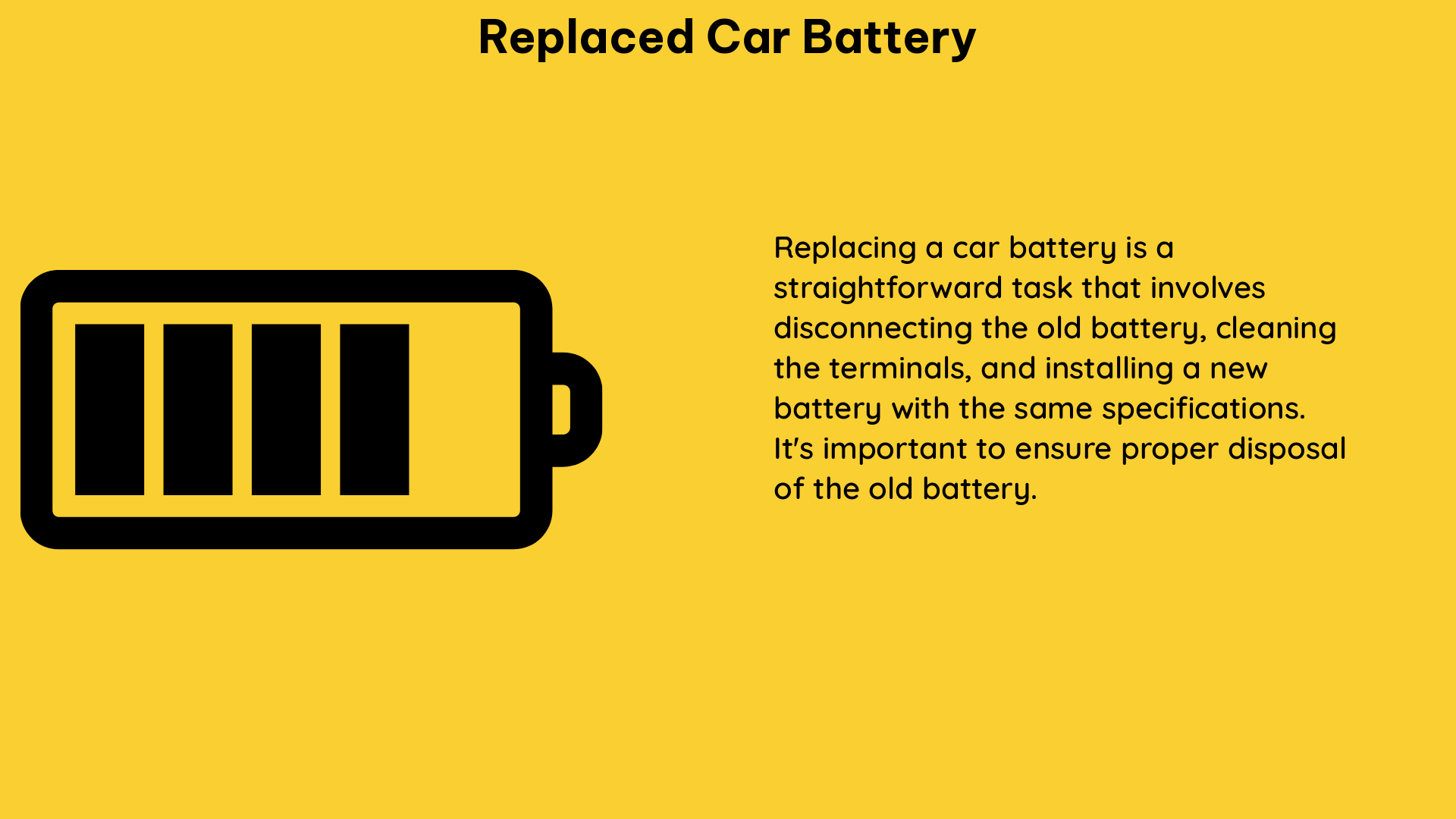When it comes to replacing a car battery, there are several critical factors to consider to ensure a successful and eco-friendly replacement. From matching the technical specifications of the new battery to understanding the environmental impact of battery manufacturing, this comprehensive guide will provide you with the necessary information to make an informed decision.
Matching Technical Specifications
The first and most crucial step in replacing a car battery is to ensure that the new battery matches the technical specifications of the old one. This includes the following key data points:
Voltage
The voltage of the new battery must match the voltage of the old battery. Most cars use a 12-volt battery system, but it’s essential to double-check the specific voltage requirement for your vehicle.
Amperage-Hour (Ah) Rating
The Ah rating, also known as the battery capacity, represents the amount of current the battery can deliver over a specific period. When replacing a battery, it’s generally acceptable to go with a higher Ah rating, but not a lower one. For example, if the old battery had a 71 Ah rating, a replacement with an 80 Ah or higher rating would be suitable.
Cold Cranking Amps (CCA) Rating
The CCA rating measures the battery’s ability to start the engine in cold weather. The new battery should have a CCA rating that is equal to or higher than the old battery. For instance, if the old battery had a CCA rating of 580, the replacement should have a CCA rating of at least 580, or higher.
Physical Dimensions
In addition to the electrical specifications, the physical size and shape of the new battery must also match the old one. This ensures that the battery will fit properly in the vehicle’s battery tray and allow for secure connections.
Here’s a table that summarizes the key technical specifications to consider when replacing a car battery:
| Specification | Requirement |
|---|---|
| Voltage | Must match the old battery |
| Amperage-Hour (Ah) Rating | Equal to or higher than the old battery |
| Cold Cranking Amps (CCA) Rating | Equal to or higher than the old battery |
| Physical Dimensions | Must fit the battery tray and connections |
By carefully matching these technical specifications, you can ensure that the new battery will function properly and provide the necessary power to start and operate your vehicle.
Environmental Considerations

When replacing a car battery, it’s also important to consider the environmental impact of the manufacturing process. The production of batteries, including lithium-ion batteries used in electric vehicles, can have a significant carbon footprint.
According to a study by the Massachusetts Institute of Technology (MIT), the manufacturing of a typical electric vehicle battery pack can result in the emission of 15 to 20 tons of CO2 equivalent. However, despite this, electric vehicles still emit less CO2 over their lifetime than gas-powered cars, even when accounting for battery manufacturing emissions.
To minimize the environmental impact of your car battery replacement, consider the following:
-
Recycling the Old Battery: When replacing a car battery, ensure that the old battery is properly recycled. Many auto parts stores and battery retailers offer battery recycling programs, which can help reduce the environmental impact of battery disposal.
-
Choosing a Sustainable Battery Manufacturer: Research the manufacturing practices of the battery brand you’re considering. Look for companies that prioritize sustainability and use renewable energy sources in their production processes.
-
Opting for a Higher-Capacity Battery: While it’s important to match the technical specifications, choosing a battery with a slightly higher Ah rating can help extend the battery’s lifespan, potentially reducing the frequency of replacements and the associated environmental impact.
By considering both the technical requirements and the environmental impact of your car battery replacement, you can make a more informed and eco-friendly decision.
Conclusion
Replacing a car battery is a crucial task that requires careful attention to detail. By matching the technical specifications of the new battery with the old one and considering the environmental impact of the manufacturing process, you can ensure a successful and sustainable replacement. Remember to recycle the old battery, choose a sustainable manufacturer, and, if possible, opt for a battery with a slightly higher capacity to extend its lifespan.
References:
- Do the specs of my new battery need to exactly match the old?
- How much CO2 is emitted by manufacturing batteries? | MIT Climate
- Car Battery Replacement Cost Guide – RepairPal

The lambdageeks.com Core SME Team is a group of experienced subject matter experts from diverse scientific and technical fields including Physics, Chemistry, Technology,Electronics & Electrical Engineering, Automotive, Mechanical Engineering. Our team collaborates to create high-quality, well-researched articles on a wide range of science and technology topics for the lambdageeks.com website.
All Our Senior SME are having more than 7 Years of experience in the respective fields . They are either Working Industry Professionals or assocaited With different Universities. Refer Our Authors Page to get to know About our Core SMEs.